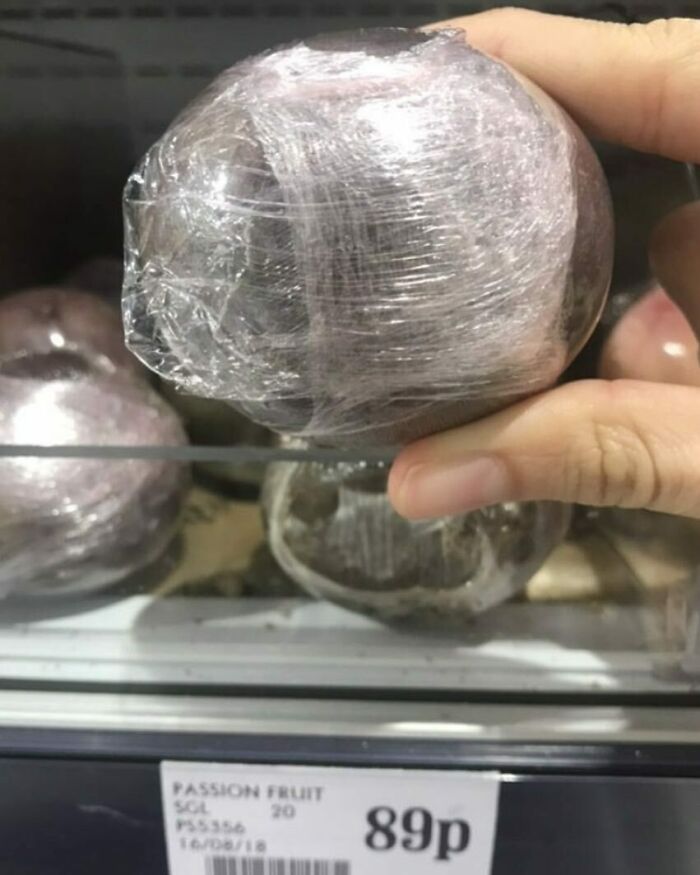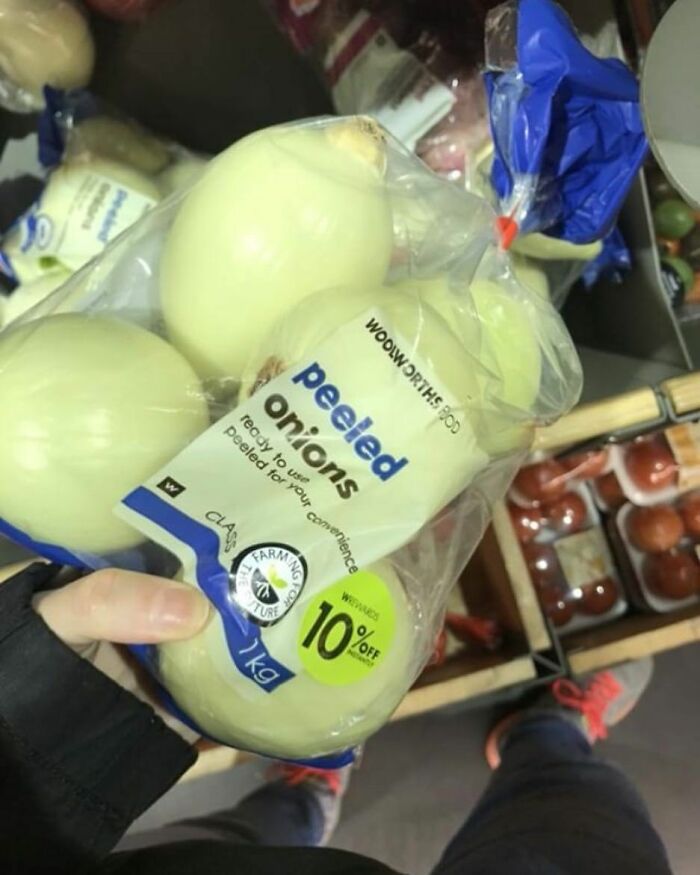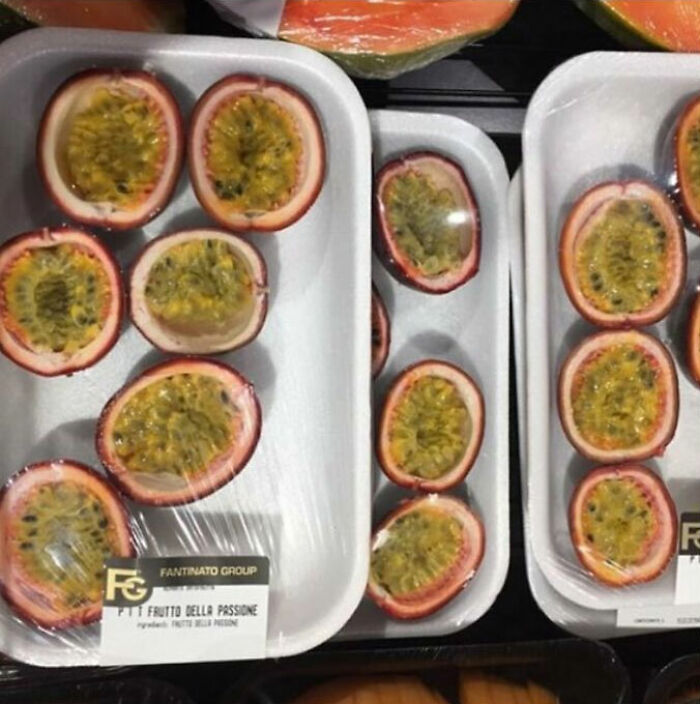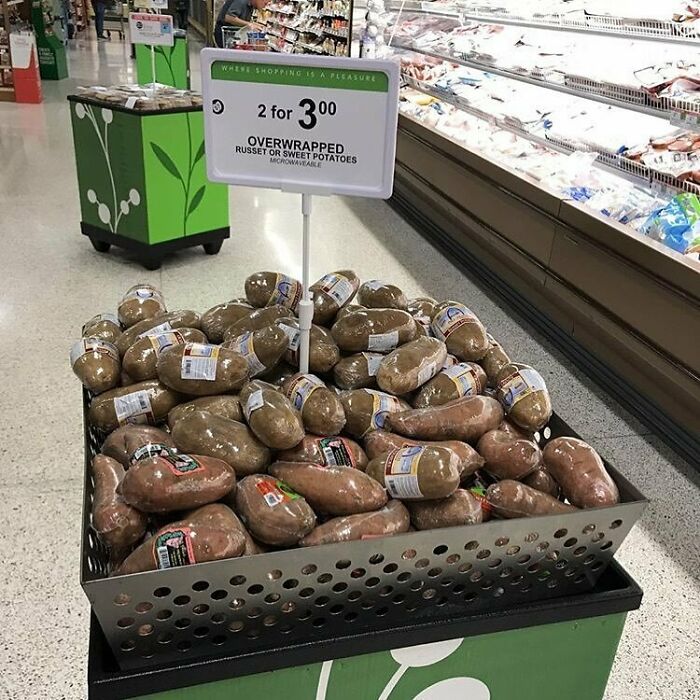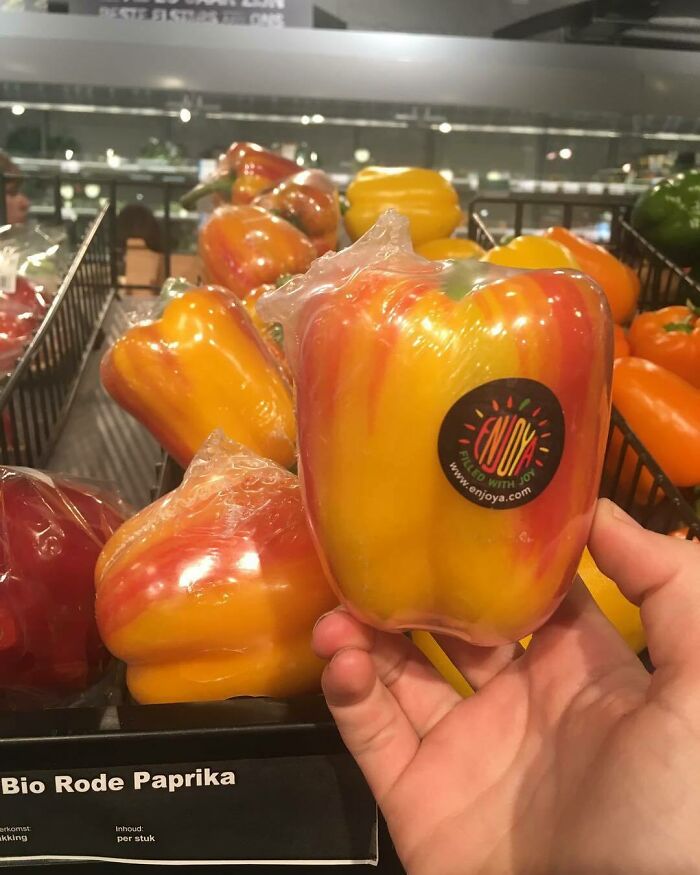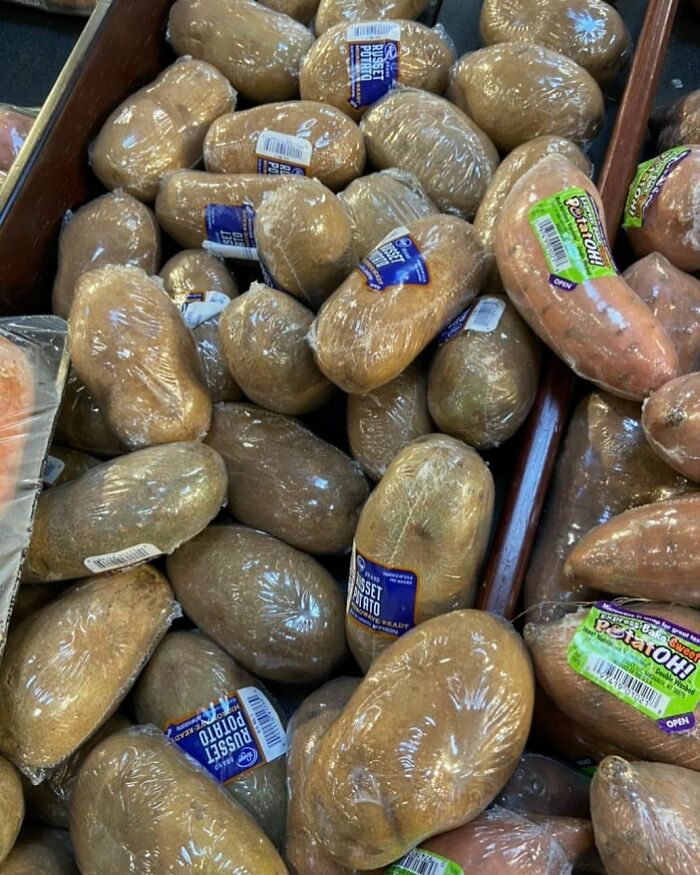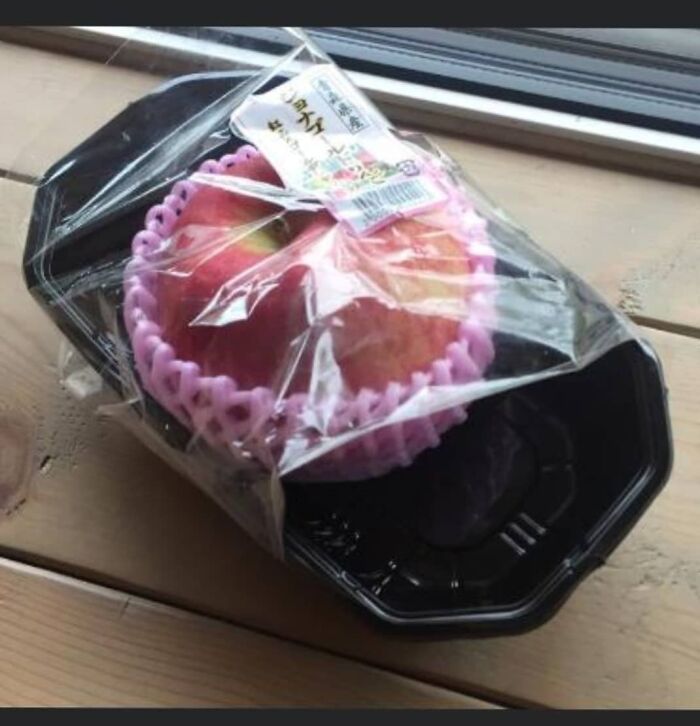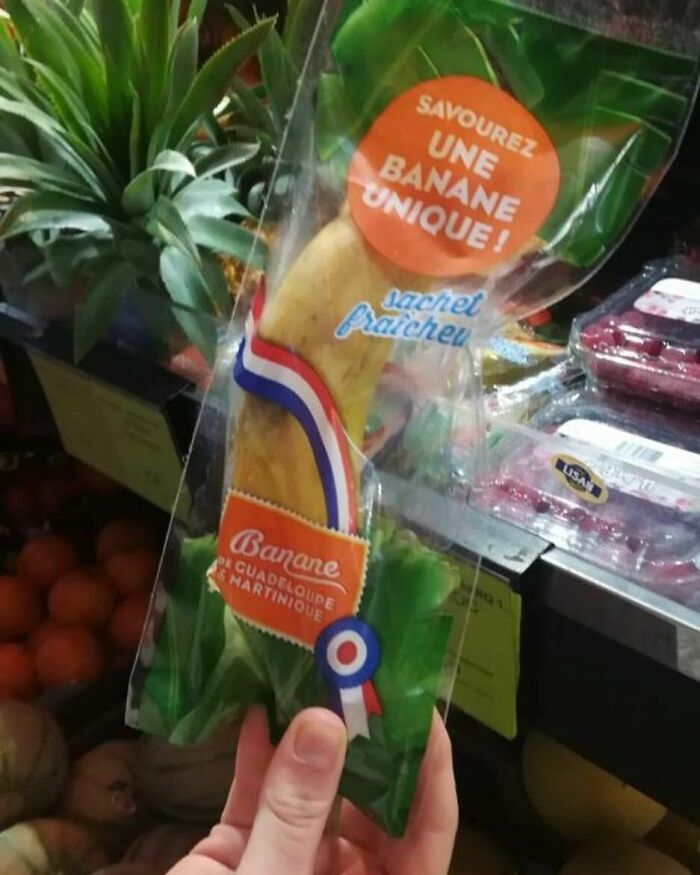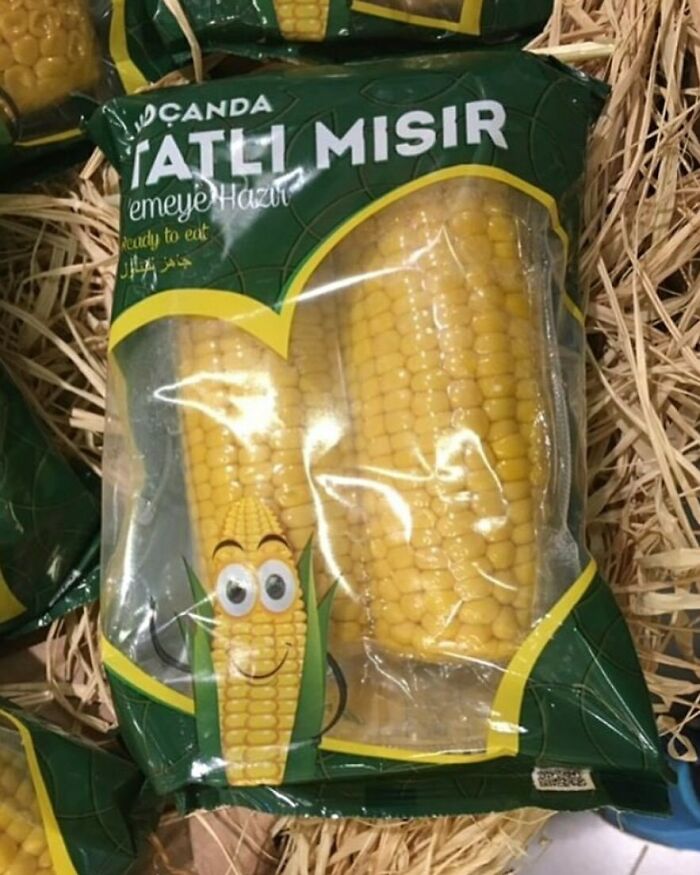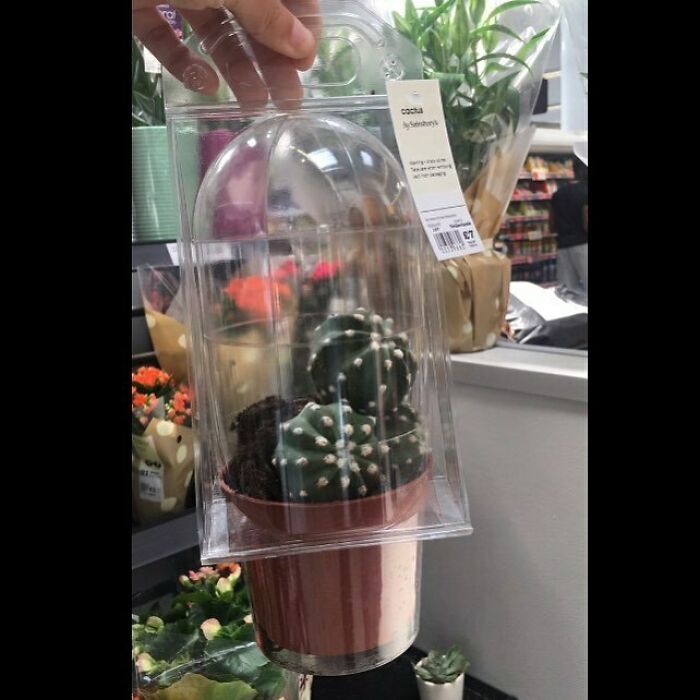It’s easy to view a pre-packaged salad or a bag of apples as a harmless purchase, but when you realize that millions of tons of debris wind up in our world’s oceans every year, much of which is plastic litter, you might want to think twice about how much plastic you purchase. From single sweet potatoes to tubes of toothpaste, it seems like stores will put anything and everything in unnecessary plastic these days, and one Instagram account is fed-up with this waste.
Below, you’ll find a list of photos from the Pointless Packaging page, which aims to call out companies which could be much more sustainable, as well as a conversation we were lucky enough to have with Ariana Palmieri of Greenify-Me. Keep reading to learn more about minimizing your own waste, and be sure to upvote the pics that remind you that our planet deserves better.
This post may include affiliate links.
Pointless Packaging has a simple mission: calling out companies and stores that create much more waste than necessary. It’s easy for consumers to be ignorant to how much plastic they’re purchasing, so this account aims to inform them of how they can make greener, more conscious choices. The Instagram’s bio states that, “We’re not going away until the packaging does,” and shares a link to a GreenPeace petition asking for grocery stores in the UK to ditch plastic packaging. “UK supermarkets currently generate 900,000 tonnes of plastic packaging every year,” the petition explains. “But our oceans can’t stomach any more plastic! From turtles entangled in six pack rings to whales with stomachs full of plastic bags, the effects of plastic pollution can be devastating.”
To help further the group’s cause, Pointless Packaging has shared hundreds of photos of unnecessarily wrapped pieces of produce and pre-packaged foods. Thankfully, the account has amassed over 32k followers, so there are many consumers passionate about reducing the world’s waste. But we still have a long way to go. Perhaps this list will even inspire you pandas to cut down on your own plastic usage and overall waste, every little bit helps!
it's a tradition in some countries to eat 12 grapes at New year's eve!!! You eat one with every chime
If you’re wondering what the big deal is when it comes to plastic waste, Ines Gendre at Greenly Institute explained the issue in detail earlier this year. She noted that every “cycle” of plastic’s life is harmful for the environment, including the extraction of fossil fuels, plastic production, distribution of plastic products and the ways in which we dispose of plastic.
“The production process releases greenhouse gasses into the atmosphere, exacerbating human-induced climate change,” Gendre explains. “So, too, does the distribution side of the life cycle. As goods produced around the world are intended for international markets, more fossil fuels need to be burned to deliver the products.”
And unfortunately, as plastics seem to be everywhere nowadays, the ways they’re disposed of have become problematic as well. For example, the United States creates 34.5 million tons of plastic every year, yet only about 9% of it is recycled.
Ok... hear me out... imagine going to wherever with the Corona light and lime. And you don't have a knife to cut said lime.
There doesn’t seem to be any perfect solution for disposing of plastic either. About 12% of it ends up being incinerated, but this is an environmental disaster as well, due to the fumes contributing to greenhouse gasses in the atmosphere. And due to the fact that most long-lasting plastics take a staggering amount of time to decompose, up to 500 years, throwing them away is doing our planet a disservice. 40% of plastics are single-use, such as bags, straws, cups, plastic wrap on foods, etc., and are particularly damaging to our oceans.
“At the current rate of primary plastic production and disposal, plastic could outnumber fish in the ocean by 2050,” Gendre writes. “Many aquatic animals consume plastic, believing it to be prey. Plastic threatens ecosystems, lowers biodiversity, and can even change the flow of nutrients between plants and animals.”
You pay 30 euro cents for the cutlery and what ever the cost is for the meat you select to be cooked there and then. Morrisons is trying something similar to this where you can visit the counters and buy a pizza, a salad or some fresh cooked chicken to eat in a designated seating area. They are still setting it up where I live. This one probably lets you buy something a seasoned steak medium rare and 2 sides and the cost is added to the price of the cutlery then you can go and sit in the dining areas inside or outside depending on the weather
When it comes to seeking solutions for the world’s harmful plastic use, it’s important for governments to have legislation in place that will limit or ban plastic production and distribution. The state of California recently passed a law eliminating all single-use plastics, and 10 years from now, all packaging in the Golden State will need to be recyclable or compostable. Canada has also passed a similar law, nation-wide, and aims to reach zero plastic waste by 2030. While these are great steps in the right direction, it’s important that these ideas spread worldwide.
If you’re wondering what you can do as an individual to help combat the impact that plastics are having on our planet, one route that many take is to start living zero or low-waste lifestyles. According to the Environmental Protection Agency, the average person produces a whopping 1.5 tons of solid waste per year, so any effort to reduce that impact can go a long way.
To learn more about what it’s like to go zero waste, Bored Panda reached out to Ariana Palmieri, the woman behind Greenify-Me. Ariana shares helpful tips and tricks for going zero waste in the least painful way possible, as well as information on why sustainability is so important. And lucky for us, she was happy to have a chat about how Greenify-Me began. “When I first started my blog, it was actually a green beauty blog,” Ariana shared. “I found myself accumulating a LOT of beauty products with ambiguous packaging. I didn't know how to recycle it, and sometimes I didn't even use the products.”
I 50% get this one... it's not a whole pineapple sliced up and put into a package. It's a few bites you can grab and go and not get sticky. It's not a banana in its own wrapper... This is also good for packing inside lunches for quick and convenient healthy snacks. Do I think this is the best use of plastic? No. Do I think this is the worst use of plastic? Also, no.
This is one of the biggest wastes of plastic I have ever seen in my life. Just get a big (bowl? Tin? Container?) of Nutella and call it a day
“So when I stumbled across the zero waste movement in 2017 and learned the average American generates ~4.9lbs of trash per day, it hit me that I was a part of that statistic. And I didn't want to be,” Ariana continued. “So I was inspired to make the switch to a more low waste lifestyle (and my blog has reflected that ever since). No lifestyle choice has ever resonated with me more!”
We also asked Ariana why she thinks grocery stores and companies are so determined to package products unnecessarily. “I think for grocery stores, a lot of it comes down to trying to extend the shelf life of their products,” the green expert shared. “Plastic wrap can preserve perishable food items beyond their natural life. While this does technically help prevent some food waste, most of it is still wasted if grocery stores don't meet their sell-by dates.”
“As for companies, I believe sometimes they think plastic-free packaging alternatives will be more expensive. For example, cornstarch peanuts that dissolve in water vs. styrofoam peanuts,” Ariana told Bored Panda. “But the truth is, companies can find ways to creatively package a product without excessive plastic and remain on a budget. Upcycling is a great solution. For example, using shredded newspaper, magazines or scrap paper to cushion their products is a cost-effective alternative. Or simply using smaller boxes to package products.”
The low waste expert says the first step we can take as consumers to limit our waste is to shop as consciously as possible. “For me, that looks like opting for fresh, unpackaged produce at the grocery store,” she noted. “I really love shopping at the farmers market because it's so easy to shop plastic-free there. You go with reusable tote bags and reusable produce bags that can be washed and reused for years to come. The farmers have no problem with it. Plus, you won't find any annoying produce stickers on your items at a farmers market.”
“I also recommend shopping at sustainable online shops when you can, like EarthHero, Life Without Plastic, Tiny Yellow Bungalow, or EcoRoots. I have a full list of my favorite zero waste stores on the blog,” Ariana continued. “Shopping at stores and shops that are aligned with your ideals will only help create more of them. Another option is thrifting or asking loved ones for hand-me-downs: This gives items a second life and reduces waste/overconsumption.”
But all of the blame shouldn’t fall on consumers, companies should also be held accountable for their part in creating waste. “It's so important to write to businesses and corporations about their excessive packaging,” Ariana told Bored Panda. “I have a whole blog post that covers this topic. Making your opinion known is a great way to get the ball rolling. Signing petitions that are against plastic pollution and excessive packaging is another good idea. You can even start one yourself.”
I’ve thought about this one, and I honestly think it’s so people are less likely to accidentally throw them away. The cost of mailing new hardware or driving to the store for replacements, etc, must seem higher than the extra plastic here. At least that’s the conclusion I came to recently while putting to get her something from IKEA.
“But most importantly, make sure to vote for people who have strong climate policy as part of their campaign,” Ariana continued. “Local elections are important and you can contact your local representatives about excessive plastic packaging and plastic pollution. Call or write to them and ask them to support things like the Break Free From Plastic Act (BFFPPA), a comprehensive bill that aims to reduce plastic pollution throughout the entire lifecycle of the material, from its source to waste.”
If you’d like to learn more from Ariana about how to start minimizing your waste, be sure to visit her blog Greenify-Me right here, subscribe to her newsletter, or check out her free e-book 10 Ways to Reduce Trash right here!
yeah, let's start wrapping bottles in plastic too! And to be safe, we could also put that plastic wrapped bottle in a styrofoam box. to be extra safe
We know you’ve been told a million times to reduce, reuse and recycle, but those three R’s have never been more important than they are now. Keep upvoting the pics that you find most atrocious, pandas, and feel free to share this list with your friends to inspire as many people as possible to cut down on their plastic waste and vote for legislation that will do the same. And if you’re interested in checking out another Bored Panda article discussing minimizing waste, we recommend this list next!
Notfornuthin but chiles are the one fruit/vegetable I'm guaranteed to put in a plastic bag when shopping.
Ok ik it's not the point, but is no one gonna talk about the ripeness scale!!!
Obviously a lot of these are terrible and there's no excuse, but the pre-cut fruit and veg ones are essential for disabled people who don't have use of or have limited use of their hands and can't physically peel/cut fruit and beg themselves.
Right and legit! But ... some 60 % or so is sold that way. I'd be surprised if that many people are disabled in a way preventing them from cutting vegetables. It's laziness and price-drivery that mainly cause these things to be so omnipresent currently.
Load More Replies...For the argument that this is for sanitation: Well, since most of these offenses are with Waitrose, Morrisons, and big grocery stores like that, have UV light hand sanitizing stations at the entrance turnstile. The turnstile won't let you in until you put your hands in the box. For the argument that this is for people with disabilities: 1. Some of this packaging is difficult even for able handed people, so that's not a solid argument. 2. Fruit and Veg cutting stations in the produce sections of these big grocery stores. Hand your produce over and have someone prep it for you.
Fruits and veg literally grow in DIRT. They are not supposed to be sanitized. You're supposed to take them home and wash them. All this plastic is not making things better. COVID germs sit on plastic exactly the same as they do on a piece of fruit.
Obviously a lot of these are terrible and there's no excuse, but the pre-cut fruit and veg ones are essential for disabled people who don't have use of or have limited use of their hands and can't physically peel/cut fruit and beg themselves.
Right and legit! But ... some 60 % or so is sold that way. I'd be surprised if that many people are disabled in a way preventing them from cutting vegetables. It's laziness and price-drivery that mainly cause these things to be so omnipresent currently.
Load More Replies...For the argument that this is for sanitation: Well, since most of these offenses are with Waitrose, Morrisons, and big grocery stores like that, have UV light hand sanitizing stations at the entrance turnstile. The turnstile won't let you in until you put your hands in the box. For the argument that this is for people with disabilities: 1. Some of this packaging is difficult even for able handed people, so that's not a solid argument. 2. Fruit and Veg cutting stations in the produce sections of these big grocery stores. Hand your produce over and have someone prep it for you.
Fruits and veg literally grow in DIRT. They are not supposed to be sanitized. You're supposed to take them home and wash them. All this plastic is not making things better. COVID germs sit on plastic exactly the same as they do on a piece of fruit.

 Dark Mode
Dark Mode 

 No fees, cancel anytime
No fees, cancel anytime 
























